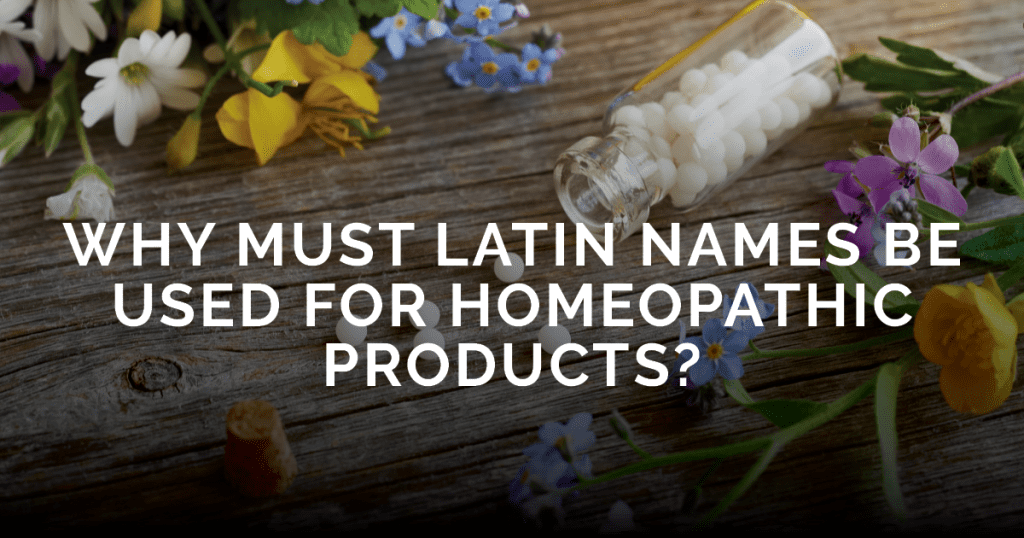Why Must Latin Names Be Used for Homeopathic Products?

By Eric L. Foxman, Pharm. (Ret.), AAHP Secretary
Consumers sometimes ask: why are the names of homeopathic ingredients in Latin? Why aren’t they in English? The answer is simple, with a more complex background.
Labeling regulations require all drugs to include a “statement of the identity” of the ingredients. The regulations go on to say the statement of identity “shall be in terms of the established name of the drug, if any there be,…” For homeopathic drug products, the monograph name is the “established name” of the homeopathic drug. Thus, the use of any other name instead of the monograph name is a labeling violation. That is the simple answer. (See 21 CFR 201.61 (a) and (b) for the full text of the regulation. [[1]])
But why are the monograph names in Latin? These Latin names are the names that had already been traditionally used for 100 years before the first HPUS was printed. The rationale for the use of Latin names becomes clear when one realizes that the Latin name is specific for a particular substance, especially botanical materials. The same English common name sprouts up (like weeds!) in different locales for different plants, thus the use of English names is very inexact.
For instance: Snakeweed is an English name for both Amorphorphallus rivieri and Euphorbia pilulifera, two plants that are not related to each other in any manner. My favorite is Locoweed, which is an English name for both Astragalus menziesii and Oxytropis lambertii, two plants that are unrelated to each other. Other cases are even more extreme. For instance, Snakeroot is part of the English common name (and sometimes it is used alone) for seven [!] different plants. These examples only include plants that are official homeopathic drug substances; other plants are not useful therapeutically but have the same English common names.
This exactitude of the monograph nomenclature is important for homeopathic products at both ends of the process. Using the Latin name helps ensure that a company is obtaining the correct material; a local English common name may refer to a different substance in another region. And on the label, that name identifies the exact and correct substance that was used to make the homeopathic medicine. As noted above, the English common name might refer to a number of different materials; how would the user know which was actually being utilized?
This is further complicated by multiple English names for one substance. For instance, homeopathic Natrum bicarbonicum is known by the English names Sodium bicarbonate, and Baking Soda, and (less frequently, but correctly) as Bicarbonate of soda. If one was trying to use the English name, which of these is the correct one? Which one would cause the least confusion for everyone? Likewise, Cuprum Ammoniuo-sulphuricum is sometimes called in English Copper tetraammine sulfate, sometimes Ammonium cupric sulfate, and sometimes as Cuprammonium sulfate. Which one of these would be the correct English name for labeling purposes? Iron sulfate and Iron sulfate heptahydrate are both names for the starting material used for Ferrum sulphuricum. Which one is the correct English synonym?
Because of the exactitude of the monograph name, which is in Latin, almost 35 years ago, the FDA informed the homeopathic industry through the AAHP that Latin names are appropriate and proper. FDA wrote: “Established names of homeopathic drugs should continue to be in Latin, as has been the custom. We agree that in some instances use of the Latin name may provide better assurance that the intended medication would be dispensed. Also, since the Latin name has been the name recognized by suppliers, practitioners, and patients, not only in this country but worldwide, there might be some confusion as to what medication is to be dispensed if the product name were to be changed.”
A simple answer: regulations require monograph (= Latin) names. A complex background involving eliminating potential confusion, inadvertent adulteration, and mislabeling. Perhaps some of this will be helpful the next time a consumer asks about Latin names,
[1] https://www.accessdata.fda.gov/scripts/cdrh/cfdocs/cfcfr/CFRSearch.cfm?fr=201.61
